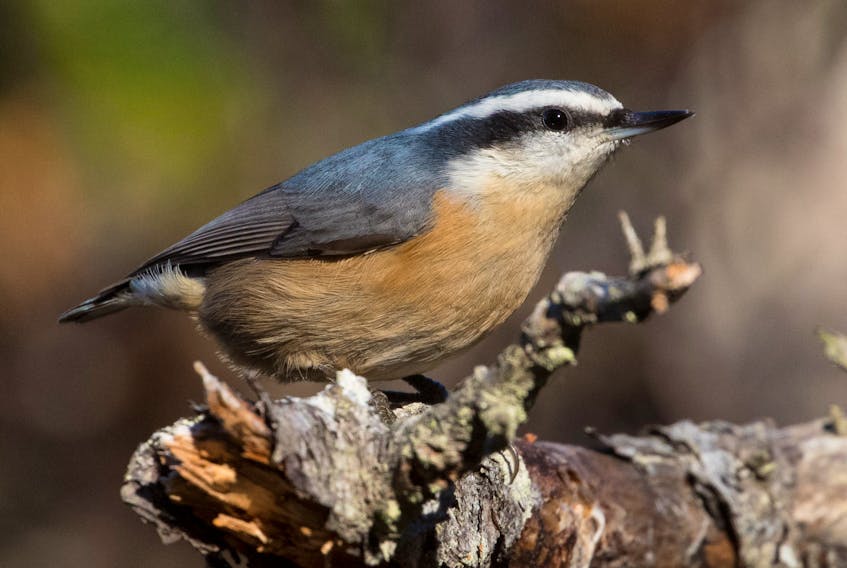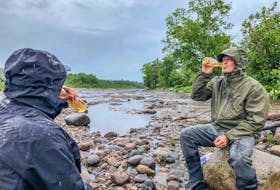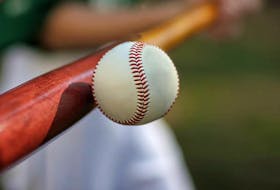It is bird feeder time.
The temperatures have dropped and most of us have seen white covering the land or at least a few snowflakes in the air.

Some days the skim of ice in a parking lot puddle lasts all day long even if it is sunny. Winter is a challenging season for the birds.
Most species of woodland bird fly far south to a place that will be warm all winter leaving the province to the few that have adapted to winter conditions here.
Their biggest concern of the wintering woodland birds is getting enough to eat. Food provides the bird with energy and also is the fuel that keeps its internal furnace burning through those cold nights. The bird species that have adapted to survive the winters of our province already have a well proven game plan to follow. Some of them will be living off seeds, and some others berries and more on hibernating insects. Some species are able eat from all these food groups.
The woods are quite rich in natural foods right now. There are lots of cones on the white spruce trees. Juncos are enjoying the seed fall from this source. They get the seeds as they are loosening from the opening cones. Boreal and black-capped chickadees are also digging into the temporary early winter abundance of this seed crop.
The little red-breasted nuthatch is born to live on the seeds from the cones. With their chisel shaped bill they jam open a space between the layered sheaths of the cone and pull out a seed. Then they wedge the seed into the crevice of the tree bark and hammer it open to get at the nutritious meat inside.
It is almost comical watching them. Like an animated toy wound up a bit too tight they go about twittering to themselves as they busily work through the spruce woods. They are friendly inquisitive birds often investigating us humans. They are easily tamed and will take sunflower seeds and shelled peanuts from your hand.
Finches of course are well known cone seed eaters. At the moment there is not much variety among the finches in the province.
Goldfinches are common in the woods on the Avalon right now. People in central Newfoundland are experiencing evening grosbeaks already and a few are starting to show up on the Avalon Peninsula as well. However, there is low activity among the crossbills, purple finches and siskins so far this season. This can all change in a matter of weeks.
There is a half decent crop of dogberries across the island and in Labrador. Hopefully this will make the province attractive to the bohemian waxwings this winter. Some are arriving in Labrador already.
On the Avalon Peninsula there are plenty of northern flickers and a few flocks of robins gorging on the brilliant red berries.
As winter progresses these wild foods become scarce. This is when our offerings of the bird feeder are welcomed by the birds living off the land. This is a good time to start feeding the birds so the birds will know about the alternate of food at your feeder when the time comes. Even when there is plenty of food in the woods birds will not pass up a free lunch when it is convenient. A well-rounded bird feeder supplies black oil sunflower seed, some small mixed seed that contains millet and a suet feeder. Some people also use nyger seed to attract more goldfinches.
However, even just throwing a few seeds on the ground will work wonders.
For those wondering about the parasite called frounce, it should be safe now. There have been enough cold nights and days this month that should have knocked off any frounce scallywags that were out there. Frounce is the name given to a parasite the can affect the throats of birds and is easily spread among birds at a bird feeder. In the unlikely event that signs of frounce do appear this late in the season we can adjust our thinking
One of the joys of bird feeder operating is identifying all the birds that come to you feeder. You learn more than just what they look like but also about the mannerisms and attitudes of the regulars. But then one day you may notice a different looking bird at your feeder. It is a stranger. It happened to Joyce Nash-Conway in east St. John’s when a summer tanager showed up at her suet block just before Remembrance Day.
Hopefully, this rare visitor from the south will fly back south after it builds up an ample supply of energy from the suet and wild berries growing in the neighbourhood. It will remain a local star during its stay. Late fall and early winter is the season for unusual visitors at the bird feeders. It could happen at your bird feeder.
Bruce Mactavish is an environmental consultant and avid birdwatcher. He can be reached at [email protected].
RELATED:









